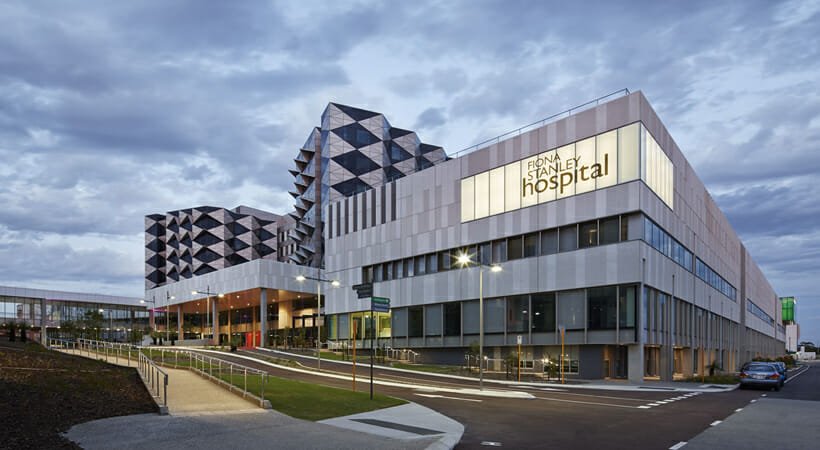Fiona Stanley Hospital is a new state-of-the-art hospital located in Perth, Australia. Opened in stages from October 2014 to February 2015, the hospital covers four city blocks and is the largest building project ever undertaken by the government of the state of Western Australia.
Fiona Stanley Hospital’s designers understood that ensuring the success of such a high-profile structure meant making it safe and comfortable for patients, staff, and visitors alike.
Principal contractor Brookfield Multiplex Pty Ltd turned to the structural and environmental wind experts at CPP to conduct a comprehensive investigation into the structural and environmental characteristics of the proposed design. We were tasked with evaluating the building’s design with respect to air quality, cladding strength, and outdoor comfort performance metrics.
CPP’s engineering team built a 1:300 scale model of the hospital and its surroundings, including the State Rehabilitation Centre, which offers specialized rehabilitation services to patients suffering from such injuries and illnesses as traumatic brain injury, spinal cord injury, stroke, orthopedic conditions, and amputations. Our team then used CPP’s boundary-layer wind tunnel to evaluate several different structural and environmental questions.
- Structural cladding: Our engineers measured wind pressure distributions across the hospital’s façade to ensure that the proposed cladding design could survive design wind speeds that are experienced, on average, every 2,000 years. This is twice the normal annual probability of exceedance being a high importance structure to function post a disaster event. Key architectural elements like parapets, canopies, and sunshades were given special scrutiny to verify that they could withstand the most severe winds likely to be seen in Perth.
- Air quality: For the elderly and infirmed clean breathing air is critical. CPP’s air quality experts evaluated such sources of contamination and odours as laboratory chemical hoods, dangerous materials rooms, isolation rooms, diesel generators, cooling towers, and even grease hoods in the kitchen. By measuring concentrations of pollutants at various locations around the site, our air quality team validated the mechanical ventilation design where it was effective and recommended mitigation steps for situations deemed hazardous.
- Outdoor comfort: Strong gusty winds can knock the elderly and frail from their feet and need to be mitigated especially in a hospital setting. CPP’s engineering team took detailed wind speed measurements at critical locations in and around the modelled hospital campus—including doorways, sidewalks, open courtyards, and the helipad—and compared the measurements with the most widely accepted comfort criteria. Most locations were found to comply with these comfort standards, but we recommended mitigation measures for the handful of locations that exhibited excessively windy conditions.
By working with CPP’s environmental and structural experts during the design phase, the designers of Fiona Stanley Hospital ensured the health, safety, and comfort of the hospital’s occupants, both indoors and outdoors. CPP is proud to have been a part of the design and engineering of Western Australia’s flagship health care center.

